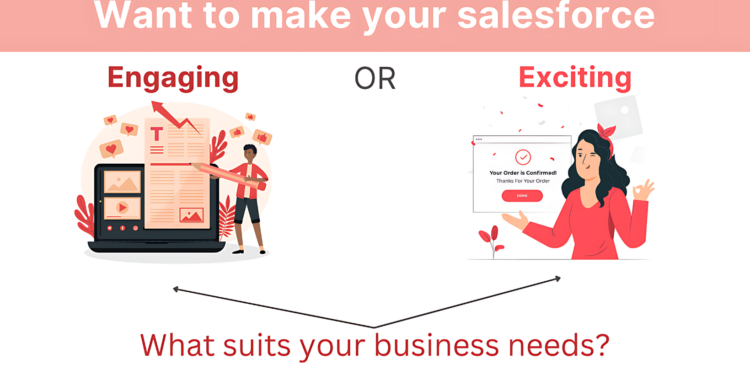We’ve all heard it before:
“We hit our targets, so our incentive plan must be working!”
But is that truly the case? Today, we’ll dive deeper into the complexities of incentive compensation, exploring why simply achieving your numbers may not always be a sign of success.
The Need for a Critical Perspective
While financial success is undeniably important, relying solely on hitting your numbers can be misleading. Consider these questions:
- Market Growth: If your company grows at 10% but the market expands at 25%, are you truly growing or are you falling behind?
- Future Sustainability: Is your incentive plan designed to adapt as the market matures and growth rates stabilize?
- Competitor Comparison: If your products, target markets, and employee capabilities are similar to your competitors, why is their workforce more efficient than yours? (efficiency guestimate considered by taking a divisible of number of employees to the group KPI considered for the dept. or organisation, for example, the amount of loan disbursed or AUM added.
2 hygiene factors we need to take care of:
- Unravelling the 20% Growth Paradox: In a market surging at 25%, even 20% growth could signify a lost opportunity. This seemingly counterintuitive scenario highlights the importance of benchmarking against market trends rather than solely relying on internal targets.
- The Motivation Puzzle: In a landscape of similar products and capabilities, why does one organization’s workforce thrive while another struggles?
The answer often lies in the effectiveness of their incentive compensation plans.
Unveiling the Nuances of Incentive Compensation
In this article, we’ll go beyond the surface-level evaluation of incentive compensation. We’ll delve into the factors that truly drive motivation, engagement, and, ultimately, sustained business success. Get ready to discover how to evaluate incentive compensation plans that not only help you meet your numbers but also propel your organization to new heights.
What is an Incentive Compensation?
Incentive compensation is a variable form of compensation provided to employees, typically in addition to their base salary, to encourage and reward exceptional performance. It serves as a motivational tool, aligning employee goals with the company’s objectives and driving desired behaviours.
In short, money that you make either by per item commission, target reaching bonus, or incentive linked to performance in the job is incentive compensation.
Considering sales is a very number-oriented department, incentives are usually easy to calculate and mostly used to motivate salespeople. Why does one incentive structure lead to quick attrition in one organisation and complacency in another?
Understanding Engagement and Excitement Metrics
Choosing an effective incentive compensation (IC) plan is crucial for driving sales force motivation and performance. While objectively measuring the impact of an IC plan is challenging, two key metrics can offer valuable insights:
- Engagement Rate: This metric reveals the percentage of the sales force receiving incentive pay. A high engagement rate generally indicates broader participation and motivation. However, it’s important to consider the Meaningful Engagement Rate, which focuses on the percentage of salespeople earning a substantial amount of incentive pay.
- Excitement Index: This metric measures the rate at which salespeople earn their last incremental incentive dollar. A higher rate indicates greater excitement and potential for top performers to push their limits.
Let me simplify it for you!
- Engagement Rate: Percentage of salespeople who were able to receive at least something as an incentive.
- Excitement Index: Average incremental reward for the last per cent of goal attained.
Let us try to understand this with an example:
An organisation wants to test 2 incentive plans called A & B.
Ideal Pay for this organisation is considered to be ₹ 20,000 in incentives.
In plan A, salespeople earn
- ₹ 500 for every percentage attained over 60% of the goal being set.
- ₹ 1000 for every percentage attained over 100% of the goal being set.
In plan B, salespeople earn
- ₹ 1000 for every percentage attained over 80% of the goal being set.
- ₹ 1600 for every percentage attained over 100% of the goal being set.
In the basic essence, plan A is focused on giving some amount in the hands of a larger audience while on the other hand, plan B is focused is focused on top performers.
Depending on the accuracy, business goal and environment, plan B can also be considered catering to the masses.
For now, let us stick to our basic essence and try to see if either of the two plans is better or worse than the other. Considering plan A catering to the masses, we assume that the engagement rate of plan A is 91%, which means 91/100 salespeople have earned at least something in incentive, i.e. reached 60% of the goal set for them. In plan B, for the same workforce in the same conditions, the engagement rate is 67%.
How do we decide the ideal engagement rate?
In most cases, the ideal engagement rate will be decided by the top leadership considering their business ideology, if they wish to have a higher pool of people for incentives, 60% might be ideal for them but if the organisation is focused on top-performing candidates, they might be looking forward to 90% as an ideal engagement rate for the organisation.
For this exercise, let us consider salespeople meeting at least 75% of their target pay(i.e. ₹ 15,000 in incentives) as meaningful engagement according to the senior management of the organisation.
Assume the following as the stats for the year:


- Hence, Engagement according to plan A is 91% and Engagement according to plan B is 67%.
- Ideal engagement(people who reached 75% of target pay) according to plan A lies at 90% goal and hence lies between (67% – 30% salespeople) and according to plan B lies at 95% goal and hence in the same bracket but has to be significantly less than A. [Solved using line equations and taking 15,000 ideal pay for ideal engagement and then mapping % goal achieved to image 2]
- The excitement index according to plan A is the average incremental reward for the last percentage of the goal attained, calculated as follows: 30 per cent of salespeople are earning the highest possible amount of ₹1,000 per percentage point of goal attained, 61 per cent are earning $500 per percentage point, and the bottom 9 per cent earn nothing; hence average excitement earning for the last percentage goal across all salespeople comes out to be ₹ 605. ((0.3 x 1000) + (0.61 x 500) + (0.09 x 0))/100 = 605. Similarly, for plan B, the excitement comes out to be ₹ 850.
Our assumption in the starting was about plan A would be the high-engagement plan and plan B would be the highly exciting plan. Sales leaders at different organisations need to trade off the importance of having high engagement and high excitement when choosing between different plans.
Plan A distributes money across more of the sales force—all salespeople with a reasonable workload are likely to make some incentive money. Plan B, on the other hand, creates more excitement for top performers who are willing to put forth exceptional effort to exceed their goals.
Now, the questions that we need to ask here are:
- Is our sales incentive structure optimised to its core to have the right balance of engagement and excitement? If our competitors have this sorted, attrition might show you the difference in such a highly volatile job type.
- Is the balance of engagement and excitement in our incentive structure, in line with the business needs, our goals and the external environment?
- Is it beneficial to have a system that is transactional sales-based, i.e. 100% engagement-based system by giving a commission on every transaction?
- Is your sales force motivated with a goal to achieve or without a goal i.e. achieve as much as you want, no cap on earning?
Set your incentive structure according to your business needs and let us keep the organisation ready for turbulent times.















